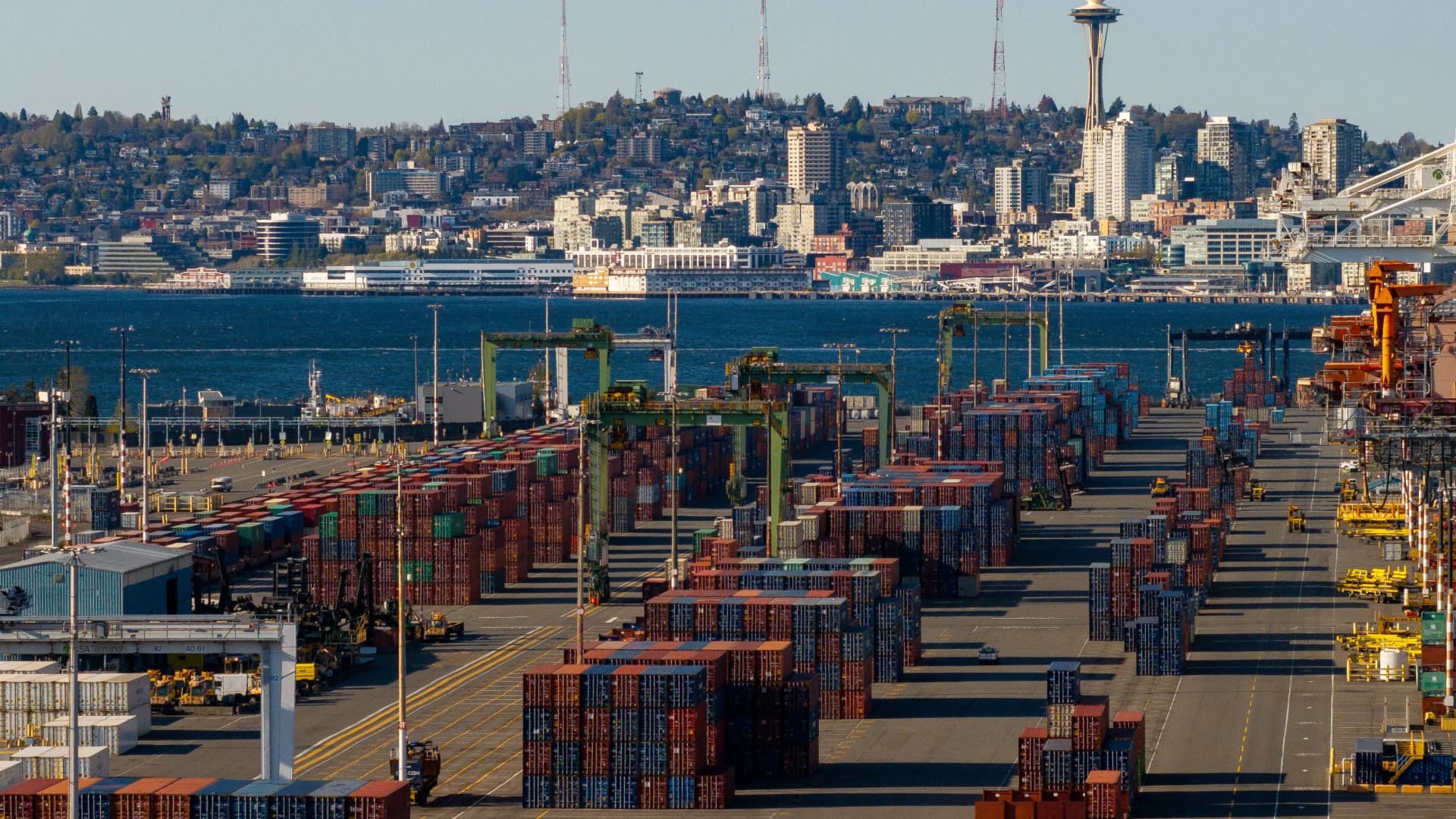A customer browses eggs on partially empty shelves at a grocery store in Lawndale, California, on Jan. 2, 2025.
Patrick T. Fallon | AFP | Getty Images
Inflation ticked up in December on the back of higher energy and food prices, according to the consumer price index.
The CPI, an inflation gauge, rose 2.9% in December 2024 versus the prior year, the Bureau of Labor Statistics reported Wednesday,
That’s up from a 2.7% annual inflation rate in November, and from a recent low of 2.4% in September.
While the upward move may seem disheartening, evidence suggests inflation should resume its downward drift in 2025, economists said.
But they caution that President-elect Donald Trump’s incoming administration could stall or reverse that progress if it pursues policies like tariffs and tax cuts, which, depending on their scope, may be inflationary.
“The key wildcard here is policy,” Joe Seydl, a senior markets economist at J.P. Morgan Private Bank, said of inflation’s trajectory.
The CPI measures how quickly prices rise or fall for a basket of goods and services, from haircuts to coffee, clothing and concert tickets.
CPI inflation has declined significantly from its pandemic-era high of 9.1% in June 2022. However, it remains above the Federal Reserve’s target. The central bank aims for a 2% annual rate over the long term.
(The Fed uses a different but similar inflation measure, the Personal Consumption Expenditures Price Index. CPI readings tend to run about 0.2 to 0.3 percentage points higher, Seydl said.)
“We’re not that far away,” Seydl said. “By the end of this year, we’d expect the year-over-year rates to be back in those targets.”
Eggs are a ‘swing factor’
There were some trouble spots in December.
For example, grocery prices increased by 0.3% from November to December, according to CPI data. (A rise of about 0.2% a month is consistent with hitting the Fed’s target, economists said.)
Eggs are a “swing factor” contributing to that increase, Seydl said.
More from Personal Finance:
Health care jobs are in demand in 2025
You may be paying to help make the mattress industry more eco-friendly
How much — if any — bitcoin should you own?
An outbreak of avian influenza, known as bird flu, in the U.S. has had a “significant impact” on egg prices, he said. The virus is highly contagious among birds and has killed millions of egg-laying chickens, reducing egg supply.
Egg prices jumped 3.2% from November to December, the largest increase for any grocery item, according to the CPI. They’re up 37% since December 2023.
Brandon Bell | Getty Images News | Getty Images
Inflation for gasoline jumped, too: Prices increased 4.4% from November to December, according to CPI data.
However, consumers may not be seeing that in the real world, though: Average prices at the pump actually fell about two cents last month, to $3.01 a gallon on Dec. 30 from $3.03 on Dec. 2, according to weekly Energy Information Administration data.
Federal statisticians adjust inflation data for seasonal patterns; gasoline prices fell less than usual in December, and the CPI registered this lower-than-normal drop as an inflation increase, Seydl said.
Gasoline prices are down more than 3% in the past year, according to the CPI. Groceries are up 1.8%.
Shelter inflation continues to retreat
Meanwhile, there were some bright spots in the CPI report, such as shelter.
The 4.6% annual inflation rate for housing in December was the lowest since January 2022. As the largest component of the price index, it has a significant bearing on inflation’s trajectory.
Economists prefer looking at a measure known as “core” CPI, which strips out volatile food and energy prices, for a more accurate reading of underlying inflationary dynamics.
There, the picture is better: Core CPI fell to 0.2% on a monthly basis in December, after having been stuck at 0.3% a month since August. The annual core inflation rate fell to 3.2% from 3.3%.
“It’s encouraging that inflation continues to throttle back, slowly but steadily,” said Mark Zandi, chief economist at Moody’s.
“The only difference between where we are and the Fed’s target is growth in the cost of housing,” he said. “That’s now definitively slowing.”
Zandi estimates inflation could return to its target level by spring or summer, barring any speed bumps from Trump administration policy.
Wage growth continued to cool in December even as the labor market remained strong: Average hourly earnings grew at a 3.9% annual rate last month, down from 4% in November, according to a separate BLS report issued Friday.
This is important because labor is a major input cost for businesses, especially those in the service sector like leisure and hospitality. Businesses may raise prices if wage growth spikes.
Trump tariff threat may influence consumer buying
Elsewhere, airline fares rose 3.9% from November to December, after rising 0.4% the prior month. Used car and truck prices jumped 1.2% during the month and those for new vehicles increased 0.5%.
Increases for new and used vehicles “points to a continued surge in demand for replacement vehicles after October’s hurricanes, which will receive a renewed impetus from the California wildfires,” Thomas Ryan, North America economist at Capital Economics, wrote in a note on Wednesday.
Car insurance prices increased by 0.4% on the month, and are up 11% since December 2023.
This is largely due to a lag effect from high vehicle inflation earlier in the pandemic, economists said. Car prices feed into motor vehicle insurance: When prices are elevated, insurers’ cost to replace vehicles after a car accident is also much higher.
At least some of the recent increase in auto prices may be because consumers are speeding up purchases — thereby raising demand — to avoid potential tariffs imposed by the Trump administration, Seydl said.
Data from a recent University of Michigan Consumer Sentiment Survey “suggest that consumers are becoming more worried about the likely stagflationary impact of Trump’s policy plans,” Stephen Brown, deputy chief North America economist at Capital Economics wrote Friday.
“The expectation of tariffs to come mean consumers judge that it is a better time to buy durable goods,” he wrote.


 Economics1 week ago
Economics1 week ago
 Economics1 week ago
Economics1 week ago
 Personal Finance1 week ago
Personal Finance1 week ago
 Blog Post7 days ago
Blog Post7 days ago
 Personal Finance1 week ago
Personal Finance1 week ago
 Economics1 week ago
Economics1 week ago
 Economics6 days ago
Economics6 days ago
 Economics7 days ago
Economics7 days ago












